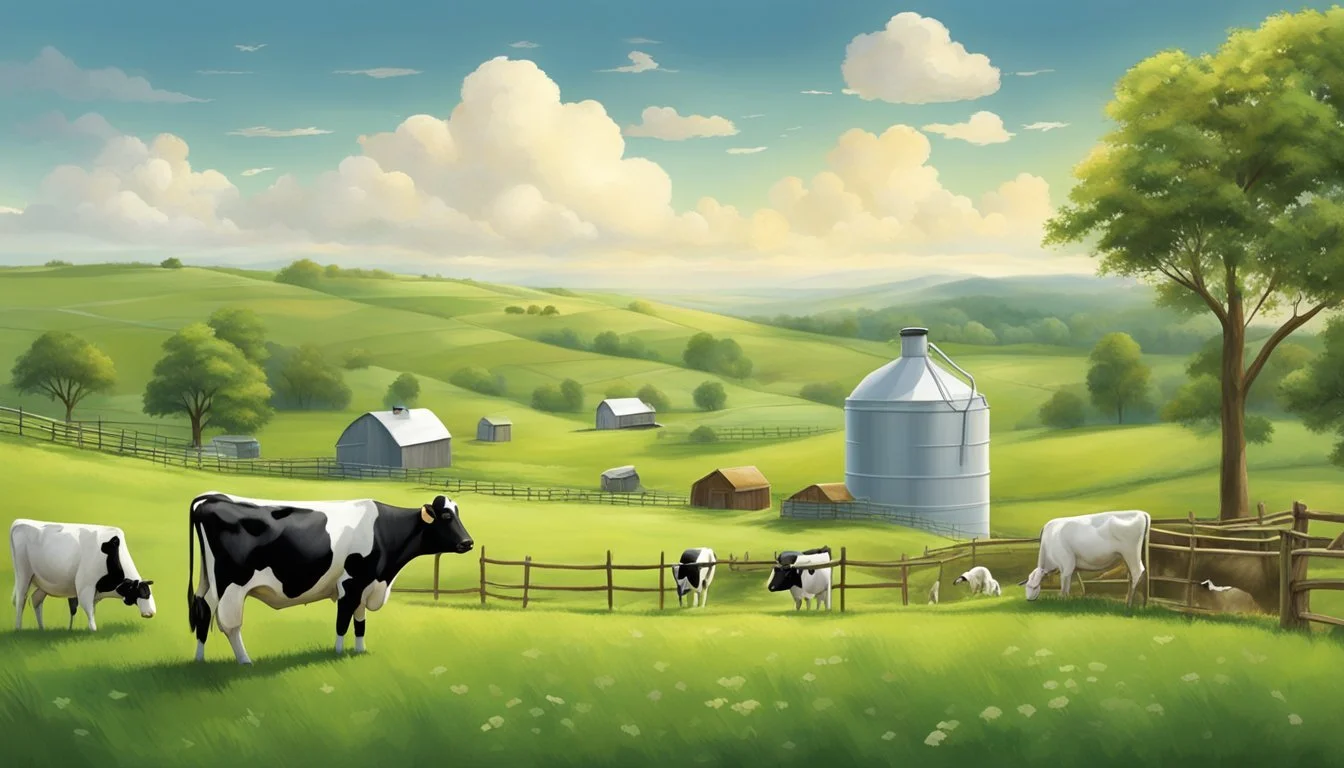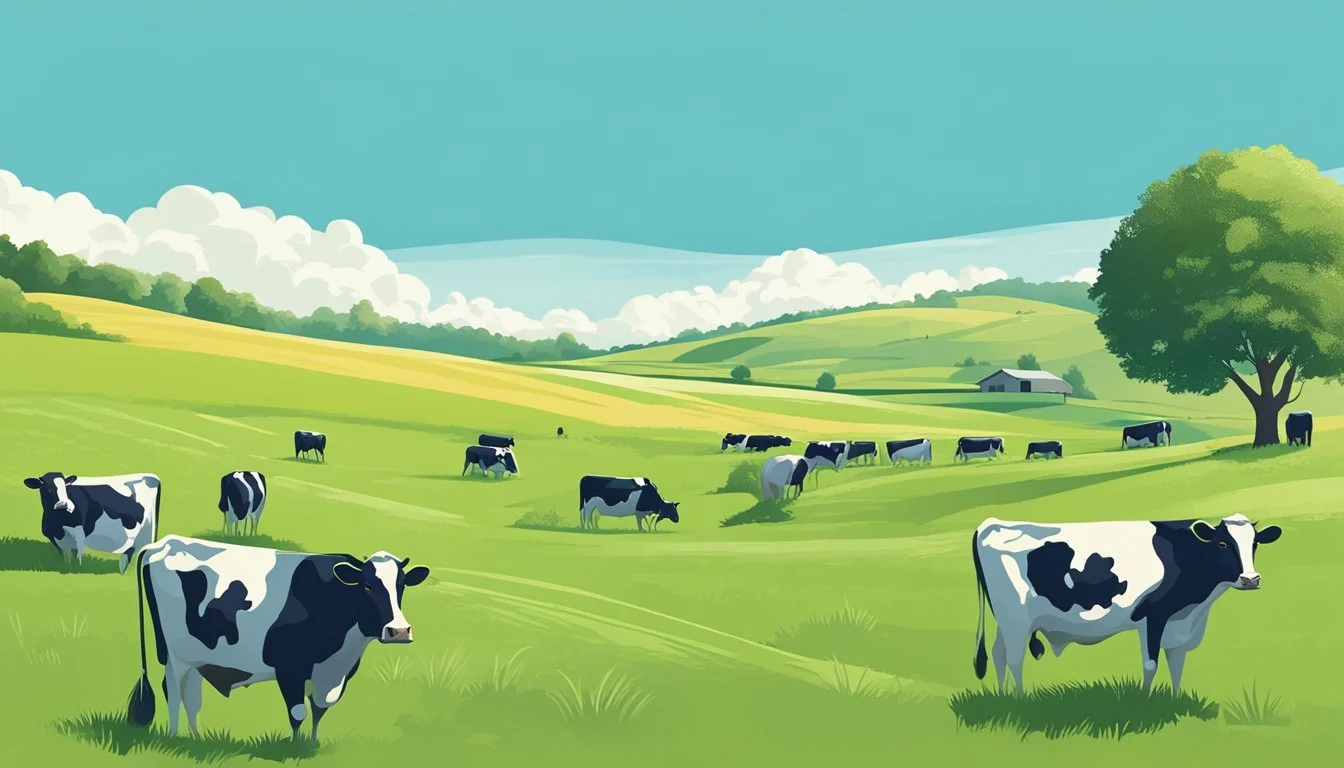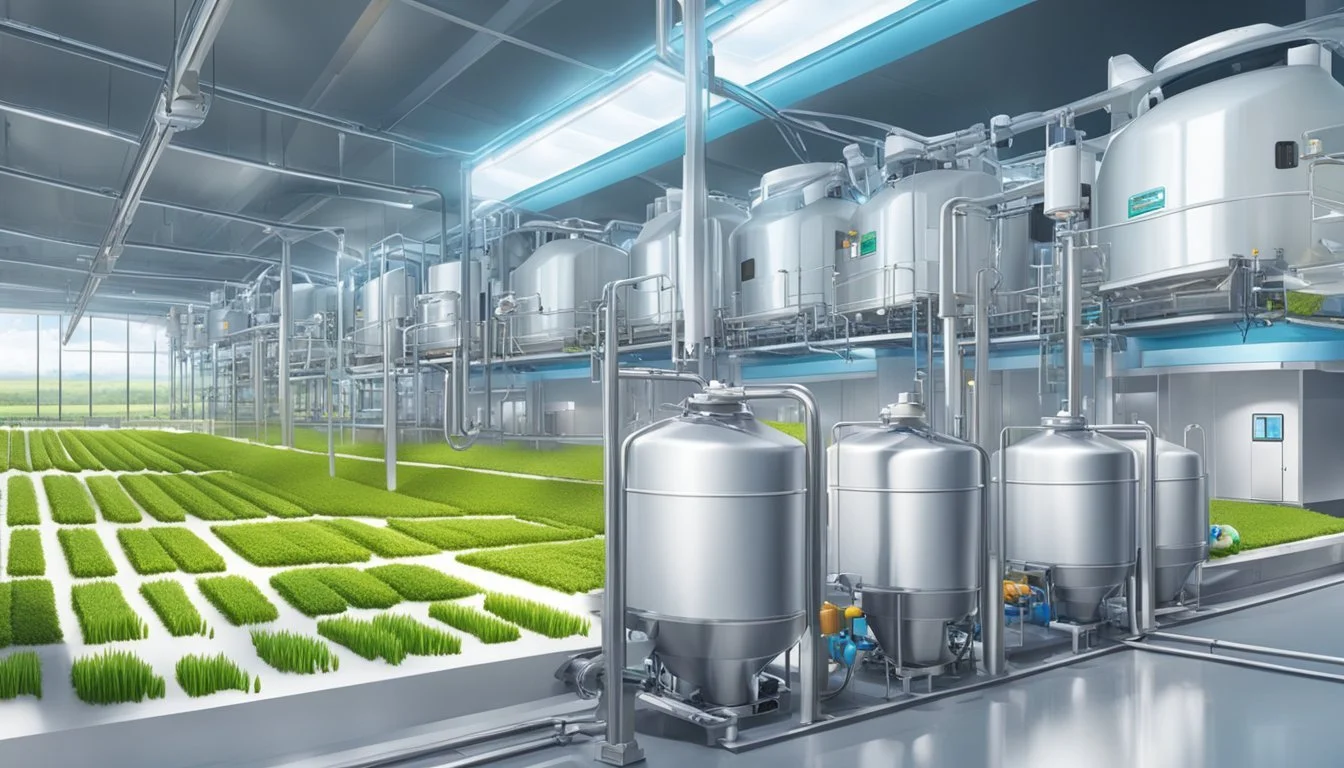The Seasonality of Raw Milk Production
Nutritional Variations Throughout the Year
Seasonality plays a crucial role in raw milk production, influencing the composition and nutritional quality of dairy products. In regions with fertile soils and a temperate climate, seasonal calving and pasture-based dairy systems are predominant. Typically, cows in such systems are grazed outdoors for most of the year, with calving aligned with the spring months. This method ensures that the herd has access to fresh pasture at a time when feed quality is at its peak, which can in turn affect milk composition.
Milk's nutritional profile is characterized by its content of water, fats, proteins, and lactose, along with essential minerals and vitamins. These components are critical for both human and animal development. However, these parameters are not constant and can vary significantly with the seasons. Factors such as temperature, feed availability, and heat stress have been linked to changes in the composition of raw milk, particularly in the concentrations of fat, protein, lactose, and casein.
The microbiological quality of raw milk can also be affected by seasonal changes. As farming conditions fluctuate throughout the year, so too does the microbial composition of milk. This variation can influence not only the safety and quality of milk but also its processing characteristics, which are vital for dairy producers to monitor to maintain product consistency. Understanding the impact of seasonality on milk is integral in managing dairy systems and crafting nutritional strategies for optimum product quality.
Embracing The Seasonality of Raw Milk Production is a celebration of nature's rhythm and the bountiful treasures it bestows upon us. This captivating journey unveils the art of savoring raw milk in its purest form, highlighting the unique flavors and qualities that vary with the changing seasons.
From crafting a delightful raw milk cure to exploring the nuances of raw milk culinary education, each season offers a distinctive palette of flavors and culinary experiences. The ebb and flow of raw milk production not only enriches our gastronomic adventures but also underscores the importance of honoring the natural cycles that shape our food.
Furthermore, delving into the world of raw milk soap making and savoring the indulgence of raw milk homemade ice cream during different seasons adds an extra layer of delight, showcasing the versatility and creativity that stems from raw milk.
Appreciating The Seasonality of Raw Milk Production also brings to light its positive environmental impact, as it encourages a deeper connection to local agriculture and sustainable practices. Whether through the charm of raw milk vending machines or the joy of discovering new seasonal recipes, embracing the seasonality of raw milk production promises a journey filled with culinary wonders and a deeper appreciation for the gifts of nature.
Seasonal Influences on Dairy Production
Seasonal changes significantly impact dairy production through their effects on milk yield, lactation stages, and pasture-based feeding practices. Understanding these factors is crucial to optimizing dairy farm productivity and milk quality.
Understanding Seasonality in Dairy Farms
Seasonality in dairy farms refers to the period of the year when most cows calve and produce milk. This period is largely governed by the natural reproductive cycle of cows and local climate patterns. In temperate regions such as Ireland and New Zealand, dairy cows often graze outdoors for 8 to 10 months a year, with herds typically calving in spring (January-April) to coincide with peak grass growth. These seasonal calving patterns are designed to harness the benefits of fresh pasture and to align with times when weather conditions are conducive for optimal milk production.
Climatic Impact on Milk Yield and Lactation Stages
Temperature and other weather conditions have a direct effect on milk yield and the specific stages of lactation. Optimal temperatures for grazing dairy cows range between 5°C and 20°C (41°F and 68°F). Higher or lower temperatures can stress animals, affecting their milk production and lactation stages. Seasonal variations can also impact the composition of milk, as elements like fat and protein contents fluctuate due to changes in animal diet and physiology throughout the changing seasons.
Pasture Growth and Feeding Management Adjustments
The availability and quality of pasture-based feed fluctuate seasonally, affecting dairy management strategies. Dairy farms with pasture-based systems must adapt their feeding management to align with grass growth patterns. During peak growth periods, cows may receive more grazing time, while in slower growth seasons, supplementary feeding systems are often implemented to maintain adequate nutrition. Effective management of pasture access and diet adjustments is essential for sustaining milk production and quality across seasons.
Composition of Milk Across Seasons
The nutritional profile of milk, including its chemical composition of fat, protein, and lactose, varies across different seasons, with factors such as lactation stage, diet, and environmental conditions playing crucial roles.
Variations in Milk Fat and Protein Content
The content of milk fat and protein can fluctuate depending on the time of year. Typically, fat concentration increases during the colder months, with a shift towards a higher proportion of saturated fatty acids. Conversely, warmer seasons often see a decreased fat content but may result in an elevated proportion of unsaturated fatty acids, beneficial for consumer health. Protein content, including casein and milk protein, also changes seasonally. The milk produced during the early lactation stage often exhibits higher protein levels.
Fluctuations in Lactose and Other Solids
Lactose, an important carbohydrate in milk, exhibits variation in concentration throughout the year. Lactose content tends to be more stable compared to fat and protein but can be influenced by the cow's diet and stage of lactation. Alongside lactose, other solids such as nonprotein nitrogen and minerals may also show seasonal fluctuations, which can alter the overall raw milk composition.
Influence of Diet on Seasonal Milk Composition
Diet significantly affects the seasonal milk composition. In periods of lush pasture growth, cows consume more unsaturated fatty acids, which reflects in the milk fatty acid composition. The nutritional profile, including somatic cell count and seasonal microbiota, can be linked to changes in diet. For example, in the spring, when cows graze on fresh pasture, the raw milk composition tends to have higher levels of unsaturated fatty acids compared to the winter feed of hay or silage, which is higher in saturated fatty acids.
Nutritional Implications of Seasonal Milk
Seasonal variation in the production of raw milk leads to fluctuating nutritional profiles which influence both the health benefits and risks as well as the overall quality of milk available to consumers.
Health Benefits and Risks of Seasonal Raw Milk
The nutrition of raw cow milk can vary with seasonality in pasture-based production systems. Whole milk typically contains essential macro and micronutrients such as water, fats, proteins, and lactose, along with minerals and vitamins necessary for a balanced diet. The access to fresh pasture in spring leads to increments in certain fatty acids that are beneficial to human health, potentially lowering coronary risk and preventing atherosclerosis.
However, seasonal variations can also introduce risks. During certain seasons, the microbiological variability of raw milk can increase, posing potential health hazards. Consumption of raw milk that has not been properly handled or treated could expose individuals to pathogens, emphasizing the need for rigorous quality control measures year-round to ensure safety.
Nutritional Profile and Quality of Milk
The nutritive quality of milk fluctuates depending on factors such as the cows' diet, their metabolic footprint, and the forage portion of their diet. The content of fat, protein, lactose, and casein in milk has been reported to show seasonal variations, which are often positively correlated with milk's thermal stability. For example, higher nutrient intake and lower heat stress in certain seasons can elevate these constituent levels, thereby enhancing the nutritional quality of the produced milk.
Seasonal stability studies suggest that raw milk’s quality can be at its peak coinciding with the optimal nutrient intake by the cows. Intensive feeding systems and milk storage methods can also influence the milk's volatile organic compounds (VOC) profile, and subsequently, its sensory and nutritional qualities. Understanding the milk's VOC profile is significant as it encompasses key attributes related to the flavor and overall acceptance of dairy products.
It is important for consumers, producers, and the dairy industry to acknowledge these seasonal variations as they may affect the nutritional value of milk products and dictate the timing and methods for its processing.
Processing and Manufacturing Considerations
The raw milk produced in different seasons has distinctive characteristics that influence its processing and manufacturing, leading to variations in the quality and types of dairy products available.
Seasonal Processing Characteristics of Milk
Seasonal variations significantly affect the processing characteristics of milk, predominantly due to changes in its composition and functionality. Milk produced in pasture-based dairy systems during seasons of lush grass growth tends to have a higher fat content and a different fatty acid profile. These factors imbue the milk with enhanced heat stability and can alter the homogenization process, where the size of fat globules is reduced. Moreover, seasonal components such as solids-not-fat and protein levels can affect the processability of milk and its suitability for various manufacturing purposes.
Impacts on Cheese Manufacture and Dairy Products
Specifically in cheddar cheese manufacture, seasonal milk's rennet coagulation properties can influence cheese yields, as well as textural and sensory qualities. The distinct fatty acid profile of milk from cows grazed on pasture may contribute to the flavor profile of the cheese. Additionally, during certain stages of lactation, variations in milk composition, supported by principal component analysis, have shown direct implications for the quality of cheese and other dairy products. These factors are crucial in determining the desired attributes in the final product and must be managed adeptly during the dairy manufacturing process.
Economic and Environmental Concerns
In considering the seasonality of raw milk production, financial returns and environmental sustainability are crucial. The economic viability intertwines with environmental practices, particularly in seasonal, pasture-based dairy systems.
Financial Returns from Seasonal Production
Seasonal variation significantly influences the profitability of dairy farms. In regions with temperate pastures, such as those dominated by Holstein Friesian and Brown Swiss cows, dairy farmers often coordinate calving with spring when perennial ryegrass is abundant. This strategy aligns with a low-cost, low-input production system which intends to optimize financial return by reducing feed costs and streamlining labor during the peak milk production period. The sale price of creamery milk production also fluctuates seasonally, affecting revenue. In contrast, indoor total mixed ration systems, which are less dependent on seasonality, may have higher input costs but can offer a more consistent cash flow throughout the year.
Environmental Impact and Sustainable Practices
Seasonal pasture-based systems are lauded for their potentially lower carbon footprint compared to year-round, high-input indoor systems. Holstein and other dairy breeds grazing on temperate pastures contribute less methane per liter of milk produced when compared to cows in cubicle housing. However, the concentration of calving in a narrow timeframe can increase methane production seasonally. Sustainable practices can mitigate these effects, as well-timed grazing can reduce overgrazing and soil compaction, leading to better carbon sequestration. Information on carbon capture through perennial pastures is essential for understanding the full environmental impact. The global milk supply chain is scrutinizing these factors, as consumers and regulators demand not just profitability but also environmental responsibility.
Technological Advancements and Future Research
With ongoing research and development in dairy farm management and production technologies, the dairy industry is poised to meet the nutritional demands and climatic challenges of the future more effectively.
Innovations in Dairy Farm Management
Recent advancements in dairy management software and sensor technologies have greatly improved herd monitoring and management. Researchers have tailored these tools to optimize feeding strategies, such as Total Mixed Ration (TMR), that maintain a balanced diet for cows, ultimately enhancing milk quality and yields. By analyzing milk samples, dairy farmers can now monitor the levels of amino acids, crude protein, and other nutrients in bovine milk more effectively, allowing for adjustments in feeding practices that promote consistent quality throughout seasonal variations.
Prospects for Enhancing Milk Production and Quality
Exploration into adaptive processing tools aims to maintain cheese quality from seasonally varying milk. For instance, the quality rating of milk used for products like Cheddar cheese correlates with the Protein to Fat Ratio (PFR), which can fluctuate based on the cow's diet and climatic conditions. Future research focuses on genetic improvements and dietary supplements that could ensure a higher, more consistent milk yield while possibly enhancing the milk's nutritional profile with an optimized balance of fatty acids and proteins. These advancements hold the potential to mitigate the impact of seasonality in pasture-based systems, sustaining both production levels and milk quality year-round.





